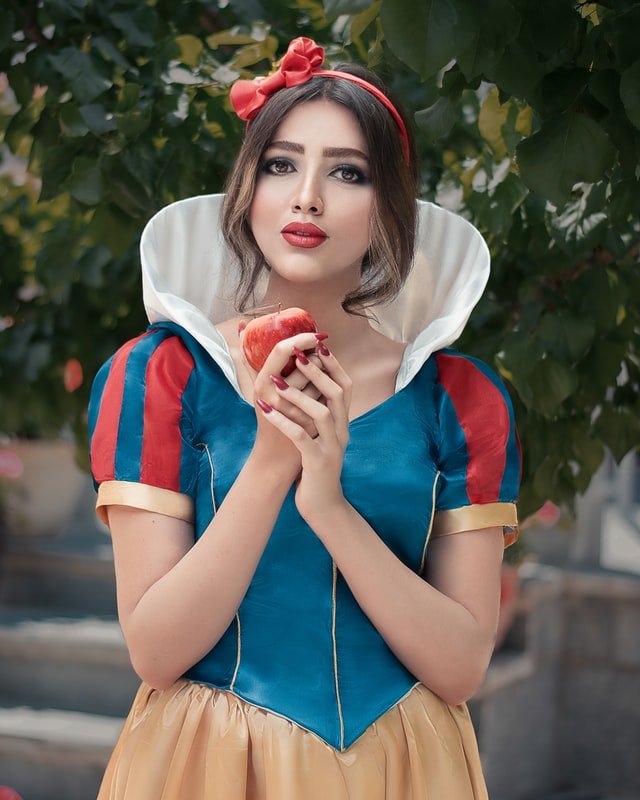It depends on what you mean by celebrity. A celebrity is someone famous, and a star is someone who gives off light and heat and has a gravitational pull so strong that if we weren’t in orbit it would drag us in. But if you want your product to be called a celebrity, it helps to understand what sort of celebrity you want.
In the online world, it’s just as easy to make something look like a celebrity as to make it look like a star. For example: I am writing this essay while wearing a costume that looks like Harley Quinn from Suicide Squad, but that’s less important than the costume itself. I am wearing her costume because this article is about my experience translating the character into a new medium, and I wanted to write about what I learned without worrying too much about how readers might interpret the references.
What matters is whether the product looks like a celebrity or a star. If you make a celebrity-looking product, people will think it’s an endorsement from the real celebrity, which makes it good for business even if they’re wrong. The more closely tied your product is to celebrities, the better.
If you make something look like a star, people will put their hopes in it simply because they think it must be good for them
As I said, the people who go to conventions and comic-conventions are not all fans. They also include media types, such as actors and writers. So the whole point of going is to get a glimpse of celebrity. And it can be pretty hard to tell what is a real celebrity and what is just a costume, especially in a crowd that has been drinking. Some of the most convincing costumes were homemade: some guy who had never done anything in his life, on a lark, made himself up like Harley Quinn; or some woman who had been flipped out on LSD and was dressed like the Princess Leia from Star Wars, with lots of glitter and beads and feathers; or even real celebrities like Robert Downey Jr., dressed like the Joker from Batman.
There is always pressure on celebrities to dress up, because we expect them to dress up. The pressure on us to dress up is even stronger: we expect them to dress up because we dress up. We tend to think that celebrities need our attention more than we need theirs.
But any time you see someone who looks like a celebrity at a convention, you have to ask yourself why they look so good when they are clearly not dressed up. The answer is that they have put in the time and
If you are trying to make something look good, you have to get the angles right. And one angle is your target’s celebrity status. A little makeup can make anyone look like a celebrity no matter how bad their image is. And so it is with costumes.
The idea of making a costume “look good” is basically vanity. You want the person in the costume to look good. That’s why everyone thinks that people who wear costumes are dressing up for fun. That’s also why everyone thinks that the only reason traditional Halloween costumes are endangered is because people are being forced to dress up by their employers or school boards or whatever. If you do not have an employer or school board or some other form of social pressure, nothing much will stop you from dressing up in costume every day (except your own taste).
In 2014, a man named Phillip Morris, who had been a minor celebrity in his native country of Jamaica for some years, managed to get a sizable amount of money from an investor to create a company that would produce high-quality fake celebrities. The new company would be called “Morris Innovations,” and its goal was to take any old person and turn him or her into the authentic celebrity that the public has come to love.
The plan was that the company would hire an actor or actress who looked exactly like the real thing, and then use makeup, plastic surgery, hair replacement, and other techniques to transform the impersonator into something that could pass as the original. The main considerations were what characteristics of the person to copy — how they walked, smiled, dressed — and how much to change those characteristics so you could tell them apart from the real thing.
After doing some research on how well people can tell real celebrities from their lookalikes, Morris was convinced he could not go wrong hiring an actress who looked like Elizabeth Taylor or Princess Diana. And indeed it turns out that these are the only two people whose fake lookalike (not impersonator) anyone has ever recognized.
In a way it’s a shame that people didn’t know Spider-Man was a real person. If you look at the history of comic books, most of the best characters were invented by companies that had no business inventing them. Superman was invented by a company called National, and Wonder Woman by a company called All-American. And those companies thought they could create superheroes as if they were TV shows: so they stuck to formula and made spandex costumes and tried to come up with plots that would sell toys.
But Spider-Man is different. He was created by one of the biggest comics companies in New York, but he was really just a guy who had some ideas about how to improve the comic book format and went off on his own and started writing and drawing and selling his own material under his own name. The first issue sold out almost immediately; the bosses couldn’t believe what they were seeing. They tried to hire him away from his publisher, but he wouldn’t go; he liked his job too much. So they told him he was fired (he wasn’t), and he went back to drawing funny pictures of funny people making funny faces for other comics companies.


